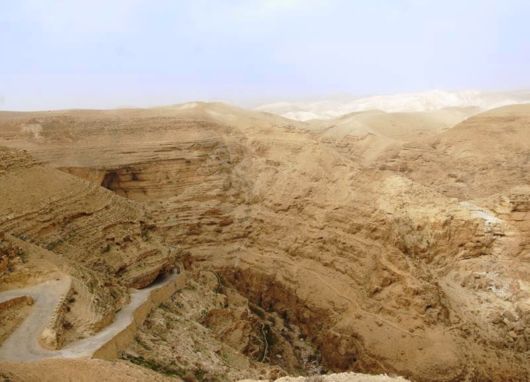The monastery was named St. George after the most famous monk who lived at the site – Gorgias of Coziba. Destroyed in 614 A.D. by the Persians, the monastery was more or less abandoned after the Persians swept through the valley and massacred the fourteen monks who dwelt there. The Crusaders made some attempts at restoration in 1179. However, it fell into disuse after their expulsion. In 1878, a Greek monk, Kalinikos, settled here and restored the monastery, finishing it in 1901. The traditions attached to the monastery include a visit by Elijah en route to the Sinai Peninsula, and St. Joachim, whose wife Anne was infertile, weeping here when an angel announced to him the news of Mary's conception. The bones and skulls of the martyred monks killed by the Persians in 614 A.D. can still be seen today in the monastery chapel.

 INFORMATION CLUB
INFORMATION CLUB Informative Zone
Informative Zone Places
Places The Hanging Monastery Of St George, Israel
The Hanging Monastery Of St George, Israel INFORMATION CLUB
INFORMATION CLUB Informative Zone
Informative Zone Places
Places The Hanging Monastery Of St George, Israel
The Hanging Monastery Of St George, Israel
